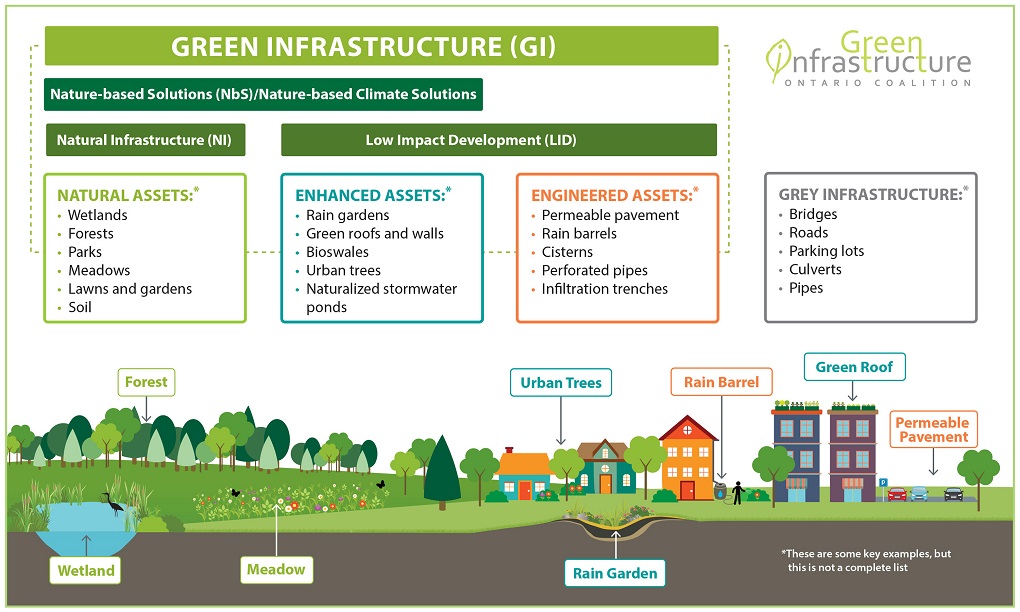Green Infrastructure: Overview
What is “green infrastructure”?
We define green infrastructure as the natural vegetative systems and green technologies that collectively provide society with a multitude of economic, environmental, health, and social benefits. This includes:
- Urban forests and woodlots
- Bioswales, engineered wetlands and stormwater ponds
- Green roofs and green walls
- Parks, gardens and grassed areas
- Natural heritage systems (interconnected meadows, wetlands, ravines, waterways and riparian zones)
- Urban agriculture
It also includes soil in volumes and qualities adequate to sustain green infrastructure and absorb water, as well as technologies like porous pavements, rain barrels and cisterns, which are typically part of green infrastructure support systems. The green technologies in this definition replicate the functions of ecosystems, such as stormwater storage and filtration.
Find out more about specific types of green infrastructure and the corresponding benefits, click on the links above.
There are many other terms used to talk about green infrastructure, including: natural infrastructure, nature-based solutions, nature-based climate solutions, low impact development, and more. Sometimes these terms are used interchangeably, but there are some key differences.
We have created the infographic below to help explain how these terms relate to each other


